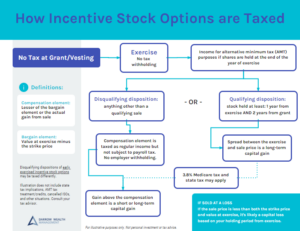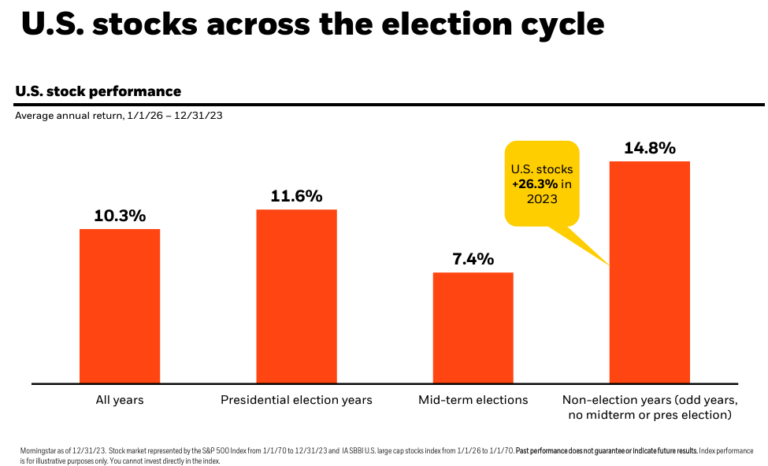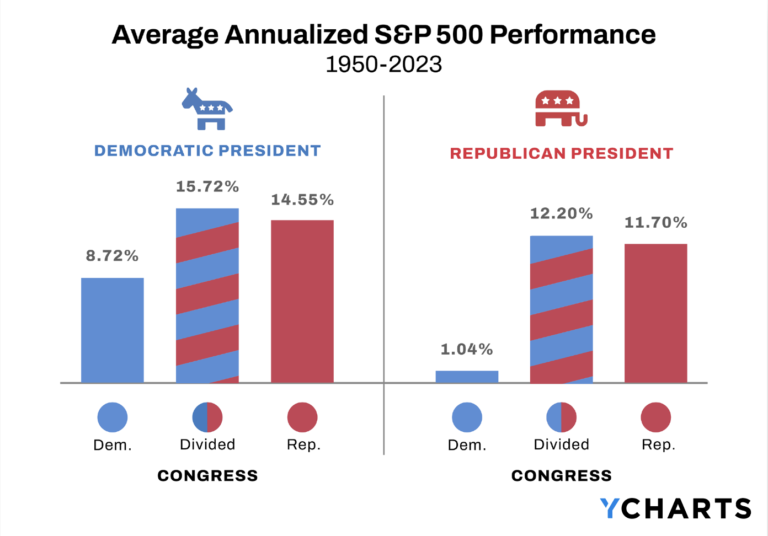How to Buy a House While Selling Your Own
Because who wants to move twice? To buy a new home before you sell your existing house, you need cash and potentially the ability to qualify for a new mortgage while carrying your current loan. For most buyers, the main question is how to raise enough cash for the down payment.
Sellers in hot markets benefit from multiple offers and low, quick-moving inventory. These hurdles are problematic for buyers, but especially those on a tight timetable before their current home is scheduled to close. If you’re confident your home will sell very quickly, you may prefer to buy your new home before selling the old one. Although challenging, here are seven options for buyers looking to buy a new home before selling the old house.
How to get a down payment when buying a house and then selling your current home
Buying a home before selling your old one is undoubtedly a risky endeavor. What if your current home doesn’t sell as quickly – or for as much – as you planned? Although there’s an inherent risk involved with this method, in a seller’s market, there’s less risk involved in most cases.
There are two big roadblocks individuals in this situation often face:
- Coming up with a down payment
- Staying within an acceptable debt to income ratio while carrying both properties
Keep in mind that many of the options to help solve problem #1 will hurt your efforts in solving problem #2. Work with your financial advisor to review your options and discuss how a particular strategy may impact your overall situation before taking action.
Is It Better to Buy In Cash or with a Mortgage?
7 Ways to Buy a House While Selling Your Own (in no particular order)
- Using equity from your current home or the house you’re buying
- 401(k) loan
- Cash-out refinance
- Getting a gift
- Put less than 20% down
- Sale-leaseback contingency
- Securities-backed line of credit to leverage your investments without selling
1. Using home equity on your home or the new house for the down payment
A home equity line of credit (HELOC) or a home equity loan are ways for buyers to tap their current home’s equity before selling the house. A home equity loan is essentially a second mortgage to provide cash that can be used for any purpose. Like a mortgage, a home equity loan will have a one-time equity draw, typically a fixed interest rate, and monthly repayments. In a home equity line of credit, you may access all or portions of your equity line during the draw period, but aren’t required to take out the entire amount. Interest rates and terms will vary.
In the last few years lenders have been offering buyers a home equity line of credit on the new home they’re buying. Essentially, buyers apply for a regular mortgage (perhaps 80% of the purchase price) and a HELOC (perhaps 10%) at the same time. You would close on both loans on the same day. While you’re selling your own home, you’ll pay all 3 mortgages. After you close on your current home, you can use the proceeds to pay off the HELOC on your new house. This won’t work in every situation, but for qualified buyers, it could be an option to discuss with your lender.
Should You Tap Your Home’s Equity?
How much can you borrow? Most institutions will only lend up to 80 percent of a property’s combined loan-to-value ratio (CLTV). Here’s an example:
Benefits and considerations for using home equity:
- Risks. The biggest risk in using home equity is that you’re further leveraging your property and take on the added risk of being under water or losing the property if you cannot keep up with the payments.
- Potential for a low rate and tax deduction. During periods of low interest rates, using home equity may be an attractive option. A portion of the interest paid may even be tax-deductible, subject to limitations.
- Advance planning. Banks do not often allow either method of the home is already on the market. Secure your home equity loan or HELOC on your current home first. At the closing of your old home, the equity you withdrew will become due in full. Make sure your projected sale price is conservative enough to cover your debts and selling expenses.
- Make sure you understand the impact on your ability to buy. Your lender on the new property will include your monthly payment (or estimated payment) in your debt ratio. Also, your credit score may suffer as a result of the additional leverage.
- Review the terms and fees. There is often a minimum draw requirement and an early termination fee.
Keeping Your Old Home as a Rental Property? Read this First.
2. Taking a loan from your 401(k)
Ask your plan administrator or HR department whether 401(k) loans are permitted under the plan. If so, find out the repayment period, interest rate, and terms associated with personal residence loans. The amount you can borrow will also depend on the plan, but cannot exceed IRS guidelines which stipulate that “the maximum amount that the plan can permit as a loan is (1) the greater of $10,000 or 50% of your vested account balance, or (2) $50,000, whichever is less.”
401(k) loan benefits and considerations:
- Repayment problems. Pre-tax 401(k) contributions will result in a pre-tax loan. Therefore monthly repayments (usually made by payroll deductions) will be after-tax. If you plan to repay yourself with a lump sum after closing, confirm whether that’s even possible.
- Better ratios. Many lenders see 401(k) loans as borrowing from yourself, so your debt ratio usually isn’t affected.
- Retirement risks. If you plan on taking a substantial loan and can’t afford to repay yourself quickly thereafter, this strategy may do more harm than good. Studies have shown many individuals who take a 401(k) loan end up worse off in the long run.
3. Cash-out refinance
A cash-out refinance is very similar to a home equity loan or HELOC in that you are using the equity in your existing home and turning it into cash. Unlike the options previously discussed that represent a secondary lien on your home, refinancing pays off your existing first mortgage and you begin a new one. With a cash-out refinance, you take a portion of your equity (around 80%) and the bank pays you the amount in cash and then adds the payout to your new, larger, refinanced mortgage.
Benefits and considerations of a cash-out refinance:
- Better rates…maybe. Refinancing may provide a better interest rate than the other ways you can use your home’s equity. If the interest rate on your existing mortgage is high, you may be able to refinance without much change in your monthly payments.
- Risks. The same considerations that apply to the preceding options apply to a cash-out refinance: foreclose risk, debt ratio and credit score implications, and the ability to repay the note at closing.
- A cash-out refinance may be quite costly so make sure you understand the terms. Closing costs can be 5% or more of the loan amount, which can significantly offset the benefits of using this method to raise cash for a down payment.
The 2017 tax reform limited the mortgage interest deduction to loans up to $750,000 for all mortgages issued after 12/15/17. However, older mortgages can still deduct interest for loans up to the old $1M loan limit. Refinanced mortgages that currently fall under the old limit can maintain their grandfathered status, provided the new loan doesn’t exceed the balance on their existing mortgage.
4. Getting a gift to buy a new home while selling yours
Many lenders will accept a gift from a family member as a portion of the down payment. For jumbo or non-conforming loans, a gift cannot be the full down payment, but some lenders will only require the buyer to put up 5% of their own funds. To obtain a gift to help with the down payment, the donor will need to complete a gift letter and provide some other financial information such as copies of bank statements. A stipulation of the gift is that it is not a loan and won’t be repaid.
Benefits and considerations of getting a gift:
- Free money! Obviously this is the biggest benefit of getting a gift. It has no impact on your debts as the donor will have to sign an agreement stating that the gift won’t be repaid.
- Gift tax considerations. Depending on the gift amount and the tax situation of the donor, the IRS may consider it a taxable gift. Ensure the donor consults a tax professional prior to signing any paperwork.
- Some lenders may require that a gift is “seasoned.” If there is a seasoning requirement, the gifted funds need to be in your bank account and reflected on your bank statements for a stipulated period of time before qualifying.
5. Putting down less than 20%
For buyers looking to purchase a home under the conforming loan limits, a 20% down payment is not required and many institutions will underwrite the loan. The difficulty is when non-conforming or jumbo loan buyers don’t have the cash in hand for a 20% down payment. In recent years, more options have become available again for these buyers. Your options will depend on where you’re looking to purchase. Different states and counties have varying loan maximums that determine what’s conforming and what isn’t. Further, some lenders are only licensed in certain states.
More common offerings for big-budget borrowers with at least 10% down are 80/10/10 loans where 80% of the loan is financed in a traditional, often 30-year fixed mortgage, while 10% is a home equity line of credit on the new property and the remaining 10% is the down payment. The same considerations about HELOCs previously discussed apply. Other lenders may offer a similar arrangement but require at least 15% down, so the loan would be 75/15/10.
Buyers with down payments of 15% sometimes qualify for a mortgage without a home equity line of credit, although it may be less than 30 years and include private mortgage insurance.
Benefits and considerations for buyers in higher price ranges and a smaller down payment:
- Always make sure the purchase price and monthly payments are within your comfort level. Just because someone is willing to lend you a certain amount does not mean you can afford it. You know your expenses and cash flows better than anyone.
- Buyers without 20% will pay a higher interest rate as their loans carry a higher risk. They will also have fewer choices when selecting a lender.
- Putting less down means having a higher monthly payment. Since you’re already carrying your old home, this may put you over the top of allowable debt to income ratios.
- A possible benefit is reducing your risk as you don’t need to tap home equity. When you do subsequently sell the existing home you can take a portion of your actual proceeds to prepay your HELOC, make equity-building improvements, or diversify by investing cash in the market. With this approach, you avoid having to spend down your old home’s equity based on projections.
- Less competitive offer. Discuss how this may impact your ability to compete with your real estate agent.
6. Using a sale-leaseback contingency
Contingencies are a common way buyers and sellers protect their interests when buying property or negotiating a deal. A seller may request a sale-leaseback to (literally) buy them some more time to purchase a new home after selling theirs. As part of the negotiations, the buyer and seller of the home will agree on how long the leaseback will be and the monthly rent.
In a seller’s market, buyers may be more willing to accept this type of contingency than they would have otherwise. Also, depending on the buyer’s current situation, it may be beneficial to both parties. As a seller, the benefit of a sale-leaseback is that you can finalize the sale and raise the needed cash to buy a new property without having to move.
Benefits and considerations of using a sale-leaseback:
- You are still on a timetable. As a buyer in a popular neighborhood, it may take some time to find and secure your next home. Even if the buyer agrees, you still may need to move before your closing date or could end up carrying both rent and a mortgage.
- If you already have an offer accepted on a new property, you know your closing date. Assuming your buyers are fine with your proposed time line, a sale-leaseback can work very well.
- Monthly rent charged by the buyers will likely be much higher than your mortgage. It will be at a current market rate. You will save yourself the hassle of moving and living out of boxes while you find a place, but your short-term expenses are still likely to go up.
7. Securities-backed line of credit on your portfolio
A securities-backed line of credit (SBLOC) or asset-based line of credit is exactly that – a way to borrow against your investment account. Using your investable assets as collateral, homebuyers can access liquidity without liquidating their portfolio. Programs will vary with the lender and not all borrowers will qualify. There will typically be a standard minimum/maximum line of credit amount, though maximums are most often set by the value of your portfolio.
Borrowing against your portfolio to buy a home isn’t a great long-term strategy, but it can be a compelling short-term solution while you await liquidity from selling your current house.
Benefits and considerations of using a portfolio based line of credit:
- Tax savings and staying invested. Perhaps the biggest benefits of using an SBLOC are on the tax and investment side. Liquidating your brokerage account to fund the purchase could mean incurring a huge tax bill, which means you’ll need more cash and also be out of the market while you sell your old home. Note that this could work for or against you in a short period of time. The interest you pay on the loan may also be deductible, subject to regular limits.
- Risks. Borrowing against your portfolio carries unique risks. The lender may be able to demand a partial or full payment at any time depending on the value of your collateral account and other factors. Discuss the terms and risks with the lender. Lenders may require approval if you wish to take any new money from your account.
- Eligibility and minimums. Not all borrowers will meet eligibility requirements. Depending on the lender, retirement accounts may not be eligible. Allowable securities can be a range of stocks, mutual funds, and ETFs. Asset-based loans usually carry a minimum credit line and minimum advance.
- Interest rates and fees. Interest rates will be variable as a spread from the Secured Overnight Financing Rate (SOFR) rate. Payments are interest only. Note that borrowers will often pay a higher interest rate than if they got a regular home loan. But unlike a mortgage with a myriad of fees, securities-backed lines of credit may have no application or maintenance fees at all.
- Flexibility and simplicity. The process of getting approved for an asset-based loan is often much quicker and easier than a traditional mortgage. Since your portfolio is the collateral, not the new home, there are no appraisals or other typical homebuying requirements from the lender’s standpoint. When the sale of your old home is complete, you can simply repay the loan and close the line of credit. If the proceeds don’t cover the balance, your payment will be reflective of the lower balance. Though this still has risks, it is more certain than with a regular mortgage, as putting a lump sum towards principal won’t automatically lower your payment.
6 Steps to Buying a New Home While Selling Your Old House
BUYING A HOME IN COMPETITIVE MARKETS
If you own a home in a competitive market and wish to upgrade in your neighborhood, you may want to buy a new home before selling your current residence. Although there are certainly risks involved, buyers with strong financials can typically make it work. Whether you plan to receive a gift, put down a smaller down payment, or use home equity, make sure to fully understand the financial implications, particularly if you intend to borrow from your retirement plan or take on a variable mortgage.
DON’T START WITH AN OFFER
Regardless of whether you are planning on keeping your existing home, all home purchases should begin with a review of your personal financial situation and involve discussions with your lender before making an offer.
To determine whether you may be able to buy a new home and keep your old one, follow the steps below:
Step 1: Set the budget and calculate your down payment
Review your financials and discuss your situation with your financial advisor. Set a target new home budget that you will be comfortable with the projected monthly payments once your existing home has sold. As your deciding on budget, look at your liquid assets to determine how much cash you have available for a down payment. Many buyers will require a “jumbo mortgage” or non-conforming loan, which means that your loan amount is above limits established by Fannie Mae and Freddie Mac. Most lenders will require a 20% down payment on these loans.
Step 2: Do your home research
Now that you have a budget in mind for the new home, go online to see what you can buy for that amount of money. We suggest buyers go to multiple open houses in this phase to get a sense of what your money can buy. You may need to revisit the budget, reassess your needs, or evaluate the feasibility of staying in your desired neighborhood.
Step 3: Meet with real estate agents
Meet with multiple real estate agents to find the right fit. Invite each agent to tour your home (make sure to declutter and clean!) and request a market assessment for its value and what their sales and marketing strategy would be. Not all agents will agree on the list price so it is important to get multiple opinions. If you’re planning on buying and selling, it probably makes sense to use the same real estate agent if you can. Many will reduce their fees or provide a credit at closing. Be sure to ask how quickly they think your property would sell and whether they think any upgrades or repairs are needed.
Finally, discuss your buy-then-sell plans with the new agent. How long do they think it will take to sell your home? Are there any red flags? Is your down payment competitive? Is using a contingency (such as the sale of your existing home) a deal-breaker to most sellers?
Step 4: Investigate financing and speak with lenders
When buying a home it is imperative to shop around before choosing a lender. The interest rates, fees, and products offered will vary considerably with each institution, and frequently by multiple percentage points. Do some online research to view published rate information and generate a list of lenders to contact.
Before reaching out, have all your data on hand and consider making a spreadsheet so you can evaluate homes later. Ask lenders to provide information based on a soft pull of your credit and other information you provide. A hard pull of your credit hurts credit score some, and should be avoided when possible. As long as you are confident in the accuracy of the data you provide, the rate information and options the lender provides should be also.
To do this, you’ll need your gross income, monthly debts or other obligations like condo fees, and credit score. Also have good estimates ready for what you estimate the property taxes, condo fees, and insurance would be on the new home. This process allows you to compare the rates and products at various lenders without incurring fees or harming your credit.
When you eventually speak with lenders, have your maximum budgeted purchase price in mind for the calculations and down payment amount. Share your plans to buy-then-sell and ask what their debt to income ratio guidelines are. Based on the data you have provided, a lender can likely tell you pretty quickly whether you may qualify while carrying your current home.
Step 5: Do the math
Take your personal information spreadsheet with all of your debt and income information and start to plug in the rates provided by the lender you spoke with that had the best rate or product for your situation. Now that you have a fairly accurate projected monthly all-in payment, are you comfortable with it? Based on your current cash reserves, are you comfortable with making the down payment, covering closing costs, and carrying both homes for a time? Finally, based on a conservative estimate of your existing home’s sale price, how much will be left after paying the outstanding mortgage, Realtor fees, taxes, and other selling costs?
Step 6: Get your team together
The last step before seriously looking to buy is to gather your real estate team to assist with the purchase and sale of your homes. Choose a real estate agent, an attorney, and move forward with a lender to obtain a pre-qualification letter.
Good luck!
Darrow Wealth Management is an independent wealth management firm and fiduciary in the Boston area. To learn more about how we work to help clients build and grow their wealth through private wealth and asset management, please contact us today.











